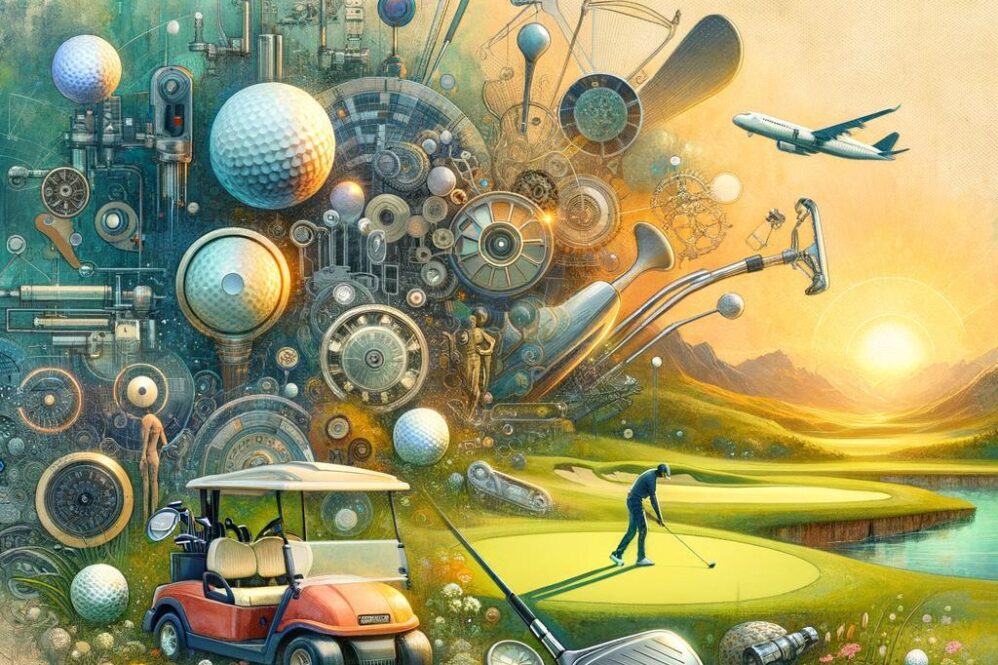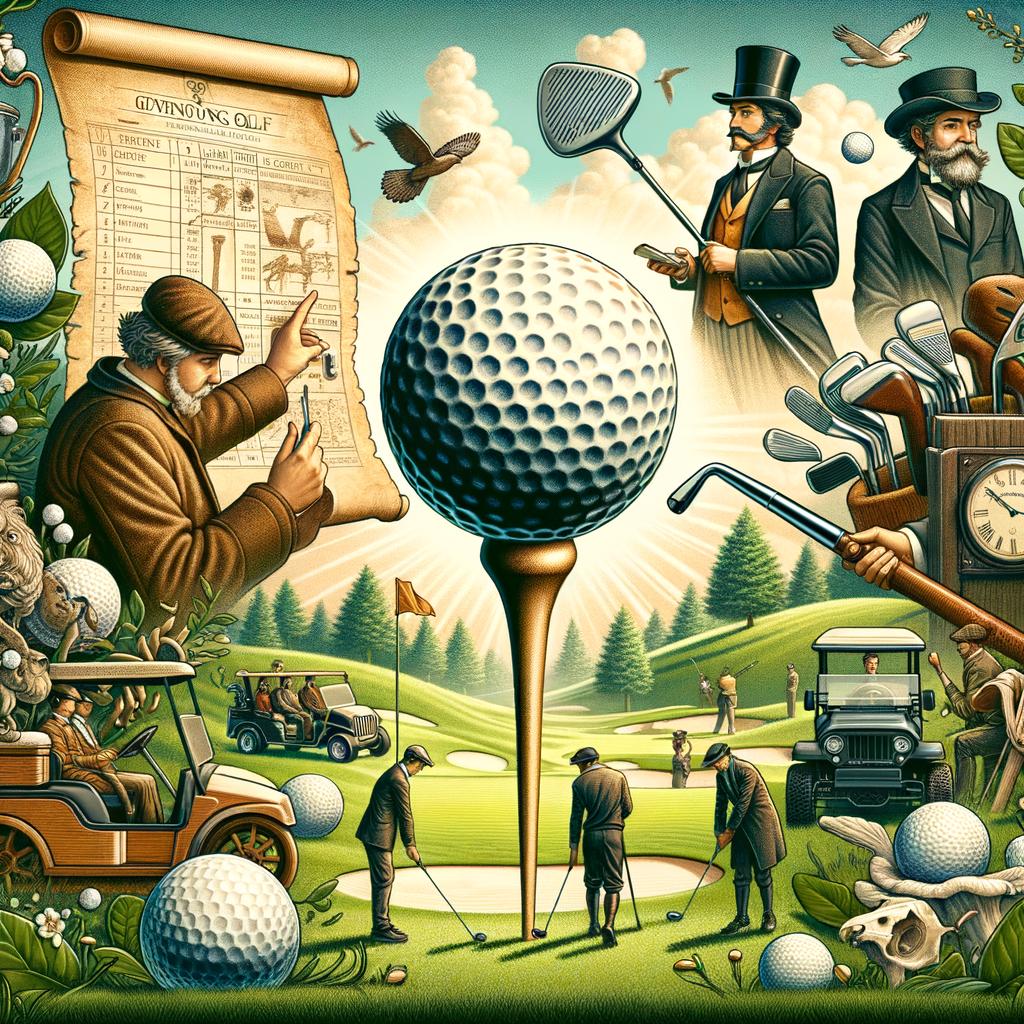The journey of golf from its nascent stages in 15th-century Scotland to its establishment as a global phenomenon reveals a rich tapestry interwoven with cultural, social, and technological transformations. Initially characterized by rudimentary gameplay on windswept links, the sport has evolved through critically important milestones, including the formalization of rules, advancements in equipment technology, and the architectural innovation of golf courses. Each of these developments not only reflects the changing dynamics of the game itself but also underscores broader societal shifts that have shaped the modern sporting landscape. this exploration seeks to illuminate the critical phases of golf’s evolution, highlighting how its enduring traditions have been both preserved and adapted in response to an increasingly interconnected world. By tracing this lineage, we seek to understand not only the ancient meaning of golf but also its role as a cultural touchstone that continues to resonate across generations and geographies.
The Origins of Golf in 15th-Century scotland
The emergence of golf in 15th-century Scotland marked the inception of a pastime that would evolve into a globally celebrated sport. Accounts indicate that the earliest forms of the game were played on the natural landscapes of the Scottish Highlands, where players used primitive clubs to strike a feather-stuffed ball towards a series of holes dug into the ground. These early variations were not officially recognized and varied considerably in terms of rules and formats, yet thay laid the groundwork for golf’s structured progress.
During this nascent phase,several critical elements began to take shape:
- Club Design: Early golf clubs were crafted by hand from hardwoods,featuring simple designs that evolved over time as players experimented with different shapes and materials.
- Ball Technology: The original feathery golf balls contained goose feathers encased in leather, which offered limited durability compared to later innovations.
- Social Context: Golf was primarily an activity for the Scottish nobility, playing a pivotal role in the social fabric of 15th-century Scotland.
In 1457, king James II of Scotland issued a decree banning the game, viewing it as a distraction from archery practise, which was essential for national defense. However,this condemnation only fueled the sport’s popularity among the masses. By the end of the 15th century, golf was recognized as an integral part of Scottish culture, leading to the establishment of formalized rules and eventually the construction of dedicated golf courses, laying the foundation for what would become a cornerstone of modern sporting life.
Key Developments in Golf Rules and Regulations Throughout History
The evolution of golf rules and regulations has been influenced by various factors,ranging from cultural shifts to advancements in golf equipment. The **early 15th century** in Scotland marked the inception of documented golf play,where local communities established informal rules. These rules primarily revolved around basic gameplay and etiquette, reflecting the social fabric of the time. Play was often marred by disputes, necessitating clearer regulations. By the late 19th century, the formation of golfing societies aimed to standardize these early tenets. The Society of St Andrews,formed in 1754,became notably instrumental in crafting the first global code of golf,cementing the groundwork for modern regulations.
Significant amendments to the rules often emerged from the increasing popularity of golf and the need for clarity in competition. The introduction of the **R&A**, the governing body of golf since 2004, ensured uniformity in rules across different countries.Key regulatory advancements included the adoption of standardized dimensions for golf holes and a formalized scoring system. For instance, the **18-hole format**, which became the industry standard in the 1760s, was solidified by the late 19th century, becoming synonymous with the game. Players were also held to rigorous standards of conduct, further outlining the etiquette that distinguishes golf from many other sports.
As golf transitioned into a global phenomenon, the necessity for comprehensive regulations became paramount to accommodate a diverse array of international players. This led to the introduction of several rules aimed at promoting fairness and integrity, such as the prohibitions against equipment modifications and the stipulation for proper attire. The last decade has seen a movement towards modernizing these regulations, reflecting contemporary values while maintaining tradition. With the advent of technology influencing player performance and course design, adjustments have become essential to ensure that the challenges presented by the sport remain consistent with its historical roots.
| Year | Development |
|---|---|
| 1754 | Formation of the society of St Andrews |
| 1764 | Standardization of the 18-hole format |
| 1900 | Formation of the USGA |
| 2004 | R&A becomes a global governing body |
the Evolution of Golf Course Design and Its Cultural Significance
The design of golf courses has evolved significantly since the sport’s inception, reflecting the societal values and aesthetics of the times while also responding to advancements in technology and design philosophy. In the early days of golf,particularly in 15th-century Scotland,courses were rudimentary and frequently enough utilized natural landscapes—links land characterized by dunes,grasses,and seaside views. The focus was on creating a space that could challenge players without the modern interventions of landscaping or artificial features. This organic approach not only fostered a deep connection with nature but also played a vital role in embedding the sport within the local culture and community.
As golf spread beyond Scotland, particularly during the 19th and 20th centuries, the design of courses began to reflect the cultural contexts in which they were situated. Not only did architects incorporate unique geographical features, but they also began to tailor courses to accommodate different styles of play and societal norms. **Key developments included:**
- Introduction of manicured greens and fairways,enhancing playability and aesthetic appeal.
- Incorporation of hazards, such as bunkers and water features, which further increased the complexity of course design.
- Utilization of innovative materials and technology in construction,which allowed for more refined course layouts and maintenance techniques.
The cultural significance of golf course design extends beyond the physical space, influencing social interactions and leisure activities within communities. Golf courses frequently enough serve as symbols of prestige and status, impacting land use and urban planning. Moreover, modern designs increasingly prioritize accessibility and sustainability, reflecting a societal shift towards inclusivity and environmental obligation. **Contemporary trends include:**
- Emphasis on ecological preservation and habitat conservation within course designs.
- Focus on inclusivity, promoting female and junior participation in the sport through thoughtfully designed facilities.
- Integration of community spaces, which encourages social gatherings and enhances the sport’s role in local culture.
The Global Expansion of Golf: From Local Sport to International Phenomenon
The proliferation of golf as a global sport began in earnest during the 19th century, driven by British colonial expansion and the establishment of golf clubs outside of Scotland. As the British Empire extended its reach, golf was introduced to diverse regions, from the United States to India, where it was embraced by the local elites and adapted to regional contexts.This cross-cultural exchange laid the groundwork for the sport to evolve into a shared recreational activity, transcending its origins as a pastime of the Scottish aristocracy. Notably, the establishment of the United States Golf Association in 1894 signaled the formalization of golf governance in America, which would play a pivotal role in shaping the sport’s modern identity and ethos.
The rise of golf in the 20th century coincided with significant social changes, including increased leisure time and the emergence of a more mobile middle class. Golf became more accessible, with public courses arising alongside traditional private clubs.Major tournaments, such as The Masters and the Open Championship, gained prominence, drawing international competitors and audiences. This transformation not only democratized the sport but also positioned it as a lucrative industry, with golf apparel brands and equipment manufacturers emerging to cater to an expanding global market. **Key factors in this evolution included:**
- Cultural adaptation: Local customs influenced course design and play styles.
- Media coverage: television broadcasts of major tournaments brought golf into living rooms worldwide.
- International tournaments: Events like the Ryder Cup promoted global camaraderie and competition.
The turn of the millennium marked a new phase in golf’s global evolution, characterized by the sport’s introduction into the Olympic Games and the establishment of professional tours across various continents. This period saw the emergence of players from non-traditional golfing nations, such as South Korea, Japan, and various African countries, showcasing talent that further diversified the competitive landscape. The integration of technology, such as advanced analytics and equipment innovation, also helped attract younger audiences, reshaping golf’s image to align with modern recreational preferences. A brief overview of key global milestones is presented in the table below:
| Year | Milestone |
|---|---|
| 1860 | First Open Championship held in Scotland. |
| 1894 | Foundation of the United states Golf Association (USGA). |
| 1960 | The first televised golf tournament. |
| 2016 | Golf reintroduced in the Olympic Games after a 112-year absence. |
Societal Influences on Golf and the Preservation of Tradition
The evolution of golf has been profoundly shaped by societal influences that have either reinforced or transformed its traditions over time. From its origins in the 15th century, when the game was played on rudimentary courses in Scotland, to its status today as a global sport, the impact of social constructs is evident. **Economic factors**, for instance, have played a crucial role in making golf accessible to a broader audience. The rise of public courses and municipal golf facilities has democratized the sport, breaking down class barriers that once confined golf to the wealthy elite. This accessibility has not only diversified the player base but also necessitated adaptations in course design and gameplay to accommodate varying skill levels and technologies.
Additionally, the **cultural significance** of golf has evolved, interweaving with national identities and global interactions.In Scotland, golf is frequently enough viewed not merely as a sport but as a rite of passage steeped in tradition, bound by customs such as dress codes and etiquette that enhance its stature. As the game spread internationally, particularly during the British Empire, different cultures infused their values into the sport. This exchange created unique variations and adaptations, leading to the establishment of different styles of play and course design. Countries like the United States and Japan have developed their own golf cultures, which reflect their societal values while also adhering to the overarching traditions of the sport.
Preservation of tradition in golf is essential, and organizations such as the **royal and Ancient Golf Club** and the **USGA** play pivotal roles in maintaining the integrity of the game through standardized rules and governance. Though, as societal attitudes shift towards inclusivity and sustainability, golf is undergoing a renaissance that balances tradition with modernity. This transition includes initiatives to promote environmental stewardship in course management, and also efforts to appeal to younger demographics through interactive and more casual formats. The challenge remains to honor the historical essence of golf while embracing innovations that meet contemporary societal expectations.
tracing the historical evolution of golf from its nascent stages in 15th-century Scotland to its current status as a global phenomenon reveals the intricate interplay between cultural, social, and technological factors that have shaped the game. As we have explored, advancements in rule development and course design reflect broader societal changes and the evolving nature of leisure activities. The enduring traditions of golf, juxtaposed with modern innovations, underscore its unique ability to adapt while retaining a strong sense of heritage. This exploration not only enriches our understanding of golf as a sport but also highlights its significance as a cultural artifact that continues to captivate enthusiasts around the world. As we look forward, the future of golf promises further transformation, inviting ongoing examination and thankfulness of this timeless pursuit.





